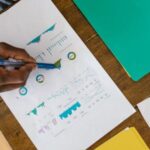Every few years, a new buzzword emerges to describe the way humans learn, work, and live. In 2025, one such word making the rounds across blogs, educational forums, and business websites is duaction. While not yet an academic term, it is increasingly used to capture the idea of dual-action—a mindset and framework that pairs two complementary forces: theory with practice, intention with execution, or data with decision-making.
The power of duaction lies in its simplicity. We live in an era overflowing with knowledge and digital tools, yet many individuals, students, and businesses still struggle with the same challenge: bridging the gap between knowing and doing. Duaction proposes a straightforward solution—don’t separate the two. Instead, weave them together in every process, creating a seamless loop of learning, acting, and improving.
Defining Duaction
At its core, duaction comes from the word “dual” + “action.” Depending on context, it has been framed in slightly different ways:
-
Education: Duaction is learning by doing—bridging theory and practice through hands-on application.
-
Business and Technology: Duaction is the unification of planning, analytics, and execution in a single cycle.
-
Personal Productivity: Duaction is the art of coupling intention with immediate action, avoiding procrastination.
What makes the concept resonate is its versatility. Duaction is not a rigid method; it’s a flexible principle that adapts across domains. It echoes older ideas like experiential learning, lean management, and continuous improvement but rebrands them in a way that feels fresh and accessible.
Duaction in Education: Learning Through Doing
The education sector has been one of the earliest adopters of the duaction mindset. Traditional schooling often separates theory from practice: students spend years absorbing knowledge before applying it in the “real world.” Duaction flips this, insisting that application must happen alongside instruction.
Examples of Duaction in Education
-
Project-Based Learning (PBL): Instead of memorizing formulas, students build prototypes, run experiments, or develop case studies.
-
Internships and Capstone Projects: Universities are embedding practical assignments as graduation requirements, so knowledge is tested in live environments.
-
Simulations and Role-Playing: Business schools, for example, increasingly use market simulations to teach management principles.
Why It Works
-
Retention: Studies show students remember more when they apply knowledge.
-
Engagement: Doing is inherently more motivating than passive listening.
-
Skill Relevance: Hands-on projects prepare learners for workplace realities.
In short, duaction ensures education isn’t just about passing exams but about preparing students to thrive in the real world.
Duaction in Business: From Data to Execution
Businesses today operate in a hyper-competitive environment where speed, adaptability, and measurable outcomes matter. Here, duaction is often framed as the integration of insight + action within workflows.
The Challenge Without Duaction
-
Organizations collect vast amounts of data but fail to turn insights into decisions.
-
Strategies are documented but execution is delayed or diluted.
-
Teams plan extensively but lack mechanisms to measure action in real time.
The Duaction Framework for Businesses
-
Plan + Execute Together: Instead of creating strategies in silos, execution teams are involved from the outset.
-
Analytics + Automation: Dashboards and KPIs are linked directly to decision-making tools, so data feeds action immediately.
-
Feedback Loops: After execution, results are tracked instantly, allowing for rapid adjustments.
Benefits
-
Faster Decision-Making: No long delays between data collection and action.
-
Efficiency: Reduces duplication and wasted planning.
-
Adaptability: Organizations become more agile in responding to shifts.
Duaction here echoes principles of continuous improvement and lean management but emphasizes duality—every analysis must tie to an action, and every action must be measured.
Duaction in Personal Productivity
On the individual level, duaction is increasingly being written about in self-development blogs. Here, it emphasizes bridging the gap between intention and execution.
The Common Problem
-
Many people over-plan: making lists, outlining goals, and researching endlessly without acting.
-
Others dive into action without clear goals, leading to wasted energy and burnout.
Duaction as a Personal Practice
-
Pair Every Goal with an Immediate Action: Want to learn a language? Open the app and do a lesson right after writing it down.
-
Use Micro-Steps: Instead of waiting for the perfect moment, start with small, achievable tasks.
-
Set Feedback Routines: Review progress weekly to ensure alignment with intentions.
Example
If your goal is to improve fitness, duaction means not just planning workouts but doing a short stretch or push-up the moment you set the intention. Over time, this small but consistent coupling rewires habits and ensures action never trails behind intention.
Benefits of Duaction Across Contexts
While its expressions vary, duaction consistently offers several benefits:
-
Bridging the Knowledge-Action Gap: Eliminates the lag between learning and doing.
-
Boosting Retention and Mastery: Applied knowledge sticks better than abstract memorization.
-
Enhancing Motivation: Small wins through immediate action sustain momentum.
-
Driving Measurable Results: When analysis is paired with execution, progress is visible.
-
Promoting Adaptability: Feedback loops allow quick adjustments.
Criticism and Cautions
Like any new buzzword, duaction has its skeptics. Critics point out:
-
Not New: Duaction is essentially a rebranding of experiential learning, lean practices, or “act while learning” models.
-
Over-Simplification: Pairing everything in dualities risks ignoring complexity. For example, in business, action without adequate planning can cause chaos.
-
SEO Trend: Much of the hype comes from blogs using the word for novelty rather than rigorous research.
Still, even if duaction is not revolutionary, its popularity underscores an important truth: people crave frameworks that simplify complex processes and help them take action.
Implementing Duaction: Practical Guide
To move beyond buzzwords, individuals and organizations can adopt duaction as a practical approach. Here’s a step-by-step starter guide:
For Students & Educators
-
Replace some lectures with projects.
-
Introduce “do-now” activities at the start of lessons.
-
Use reflection journals to connect theory with practice.
For Businesses
-
Link KPIs directly to workflows and assign immediate actions.
-
Use agile sprint cycles to couple planning with execution.
-
Foster cross-functional teams where data analysts and operators work together.
For Individuals
-
Create an “Intention-Action Pairing” journal: write the goal and the action done instantly.
-
Break down goals into “10-minute actions.”
-
End each day with a reflection: Did my actions match my intentions?
The Future of Duaction
As digital systems and AI tools become more prevalent, duaction may evolve into more automated forms. Imagine:
-
Education: AI tutors that assign real-world mini-projects alongside lessons.
-
Business: Dashboards that not only analyze performance but trigger workflow automations instantly.
-
Personal Life: Smart apps that pair calendar entries with immediate micro-actions.
The essence of duaction will remain: keep learning, planning, and acting in constant dual motion.
Conclusion
Duaction may be a buzzword today, but the principle it captures is timeless: knowledge without action is incomplete, and action without knowledge is blind. By marrying the two, we create a cycle of learning, doing, and improving that can transform classrooms, boardrooms, and personal routines alike.
For readers who want to explore such modern frameworks and lifestyle concepts further, follow along on Tumblr Magazine, where we unpack emerging trends, productivity insights, and forward-looking ideas shaping our world.







